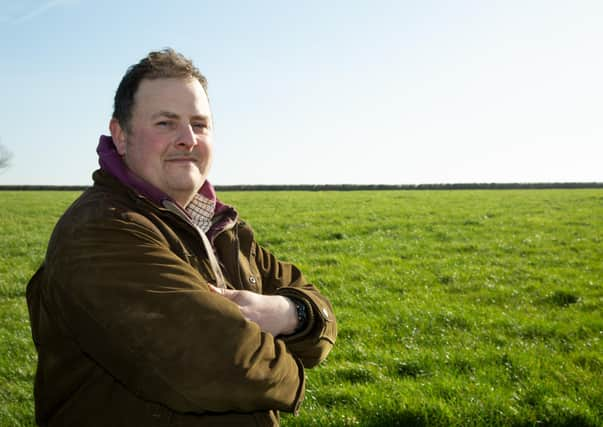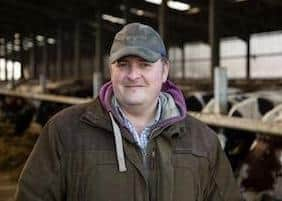Succeeding with a six-cut system on Pembrokeshire dairy farm


For Steve Evans, grass silage isn’t simply something to tide his cows through the winter. It’s a key foundation for his business.
As many as six cuts a year are taken to ensure the best possible quality for his 480 milking cows and 320 followers at Spittal Cross Farm, Haverfordwest – a mixture of Jersey x Holsteins and Holstein x Norwegian Red x Fleckvieh crosses. Cows are autumn block calved.
Advertisement
Advertisement
“We don’t have a target for milk yield,” explains Steve. “We just make the best silage we can and milk output is a by-product. Our target is 12 ME silage at 32% dry matter.


“With a three-cut system, you’ve got three chances to get it right and generally the grass isn’t as ‘milky’. With six cuts, we’ve got six chances.
“Also, because we’re cutting more frequently, we’re leaving greener stubbles and the grass actively wants to re-grow. Three or four days after mowing the first leaf is back up. We maintain we can achieve more tonnes per acre over the season. We aim to re-seed 20% of our silage ground with late-heading ryegrass varieties every year.”
Steve’s move to multi-cut began six years ago after a trip to the Netherlands where he saw the system in action. “We thought: we can replicate this back home and lower our cost of production.
Advertisement
Advertisement
“Our biggest ongoing cost is going to be purchased feeds over winter. So the less we can buy, the better.”
With the farm’s milk going for cheese production, Steve wants 4% butterfat and 3% protein. Since feeding a more forage-based diet, he says butterfat has been 4.6% and protein 3.7-3.8%, so his buyer is happy.
As well as the multi-cut grass silage, cows receive wholecrop wheat, which is also grown on the farm, and 4 kg/cow/day of a 16% protein blend, all fed through a mixer wagon. An 18% protein cake is also fed at 4 kg/cow/day, split between two milkings in the parlour.
Steve says: “We take regular silage samples and feed passage samples and send them for analysis, so we can tweak the ration as we’re going along.”
Advertisement
Advertisement
He says another benefit from leaving green stubbles in silage fields is how quickly they can recover after dry conditions.
“We make our own silage with our own machinery. We bought our own new, self-propelled forage harvester this year to give us even more control. With cuts being lighter, we can pick grass up at 15-20 acres per hour.”
By including wholecrop in the ration, Steve says it adds back fibre to balance the low fibre in the younger-cut grass and provide a gut conditioner. Although cutting grass later would increase its fibre content, he says the lignin in older grass can’t be digested, whereas wholecrop fibre can.
He continues: “We aim for first-cut silage around 20 April, depending on the weather, and then try to cut every 4-5 weeks.
Advertisement
Advertisement
“Because it’s cut at 19-20% dry matter and we’ve not got a massive amount of heat at that time of year, the April cut can be difficult to get dry. So quite often we’ll have to wilt it for 48 hours.”
After that, subsequent cuts are usually wilted for 24 hours. All six cuts are tedded soon after cutting to accelerate drying.
“After 24 hours we normally get to 32% dry matter. We’ve played around with dry matters, but at 32% I’m happy. The damper the silage the higher the chance of acidosis. It consolidates well at this dry matter too.
“Our biggest challenge is slurry. But using a trailing shoe has allowed us to put slurry on throughout the growing season despite four-week cutting intervals and allowed us to cut bagged fertiliser use back.”
Advertisement
Advertisement
To preserve silage, an additive forms an integral part of Steve’s system. But as further proof, he undertook a comparison two seasons ago by leaving some grass untreated, while the rest received Ecosyl.
Two separate silage analyses confirmed improved fermentation following the Ecosyl treatment, he says, with a stable clamp and no burning up of sugar. But more significantly, cows yielded 1.4 litres more milk/cow/day on the treated silage, with milk protein increasing from 3.72% to 3.86% and butterfat hitting 4.9%.
“These animals were in mid-lactation. If they had been given that silage during peak lactation they’d have probably given an extra 1-1.5 litres again.
“The comparison was well worth doing. In one field where we had raked it a bit low and picked up a bit of slurry, the Ecosyl overpowered the slurry bacteria.
Advertisement
Advertisement
“The old school says if the sun is shining you don’t need an additive to make grass silage. But you’ve got to stabilise it in the clamp by dropping the pH quickly. If you don’t use an additive, that’s not going to happen.
“My view is, if you’re relying more on forage, for the cost per tonne treated, an additive is the right thing to do.”
Volac Ecosyl additives are distributed in NI by John Thompson & Son Ltd tel; (028) 9035 1321. Browse www.cuttoclamp.com for details.